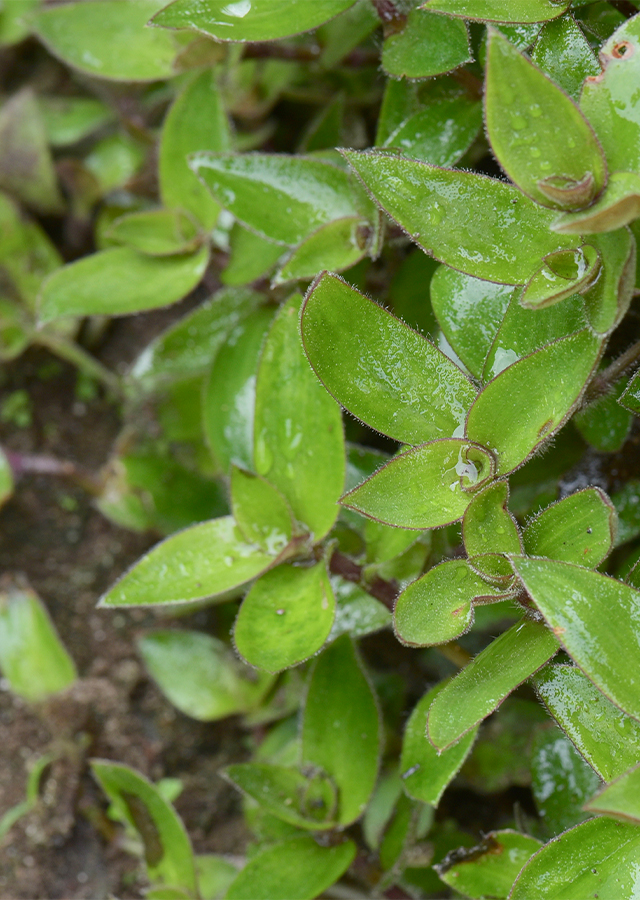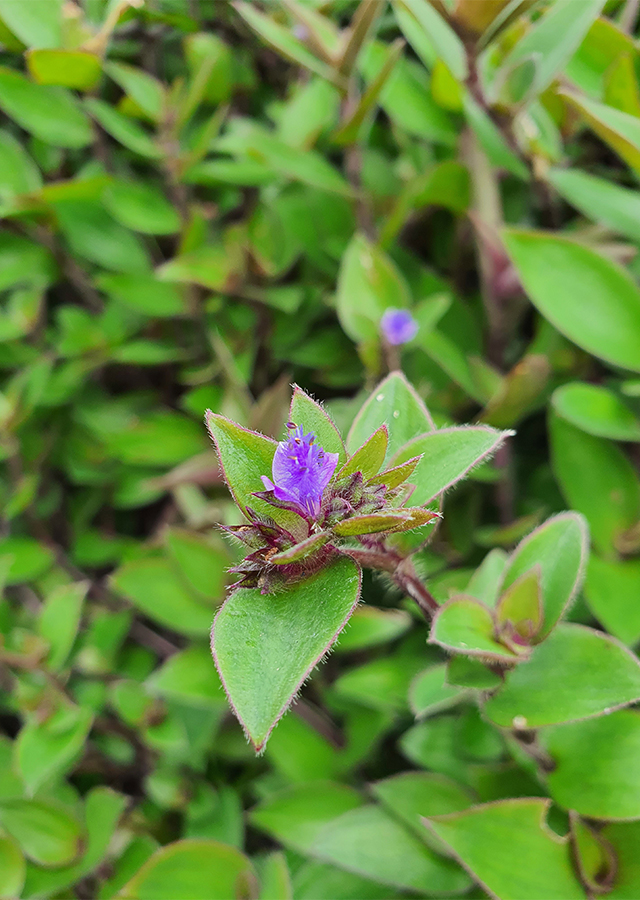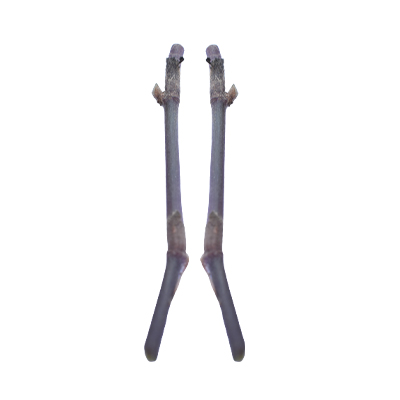Wandering Jew
Tradescantia fluminensis Vell.
Commelinaceae
Location in our garden
Principal



Synonym
Tradescantia albiflora Kunth
Tradescantia laekenensis L.H.Bailey & E.Z.Bailey
Habitus
Herbaceous. A perennial ground cover that spreads along the ground with soft, hairless stems and leaves
Part Used
Leaves
Twigs
Growing Requirements
Full Sunshine
Need Shade
Drought Resistant
Habitat
Wetland
Riverbanks
Forest
Roadside
Overview
Wandering jew is a native Brazilian herbaceous plant, which has been introduced to be used as an ornamental in many warm areas of the world. In New Zealand and other countries it has become an aggressive invader of natural ecosystems, causing serious environmental disturbances and threatening biodiversity.
Vernacular Names
Sebrina (Tagalog-Philippines), Barbija (Spanish), Diao zhu mei (Chinese), Vandrande Jude (German), Nohakata karakusa (Japanese), Nohakata karakusa (Brazilian).
Agroecology
Higher rainfall zones are preferred, usually over 1,000 mm per annum and up to 1,800 mm have been recorded, although the absolute limit is likely to surpass this. The average annual temperature varies from 15-2 °C. This plant is susceptible to frost; the temperature that causes 50 percent harm is measured at -4.0 to -4.4 °C, can remain as low as 1.4 percent of maximum light in the deep shade, can withstand shallow soils of any sort, but favored are slightly acidic soils.
Morphology
- Leaves - often softly dotted with darker green or tinged with purple. The leaves with a seersucker texture are also slightly puckered. Alternately, they arise from fuzzy marginal, closed sheaths that cover the stem at the nodes.
- Flowers - actinomorphic or almost bisexual, with a diameter of around 2 cm and three white petals, three green sepals and six fertile stamens, respectively. At the tip of the leafy shoot, flowers are produced in clusters.
- Fruits - capsular and locules (three) are one to two seeded. Seeds are arranged in a row and black also pitted.
Cultivation
Propagated by stem cuttings.
Chemical Constituents
ß-sitosterol, 3β, 5α, 6β-trihydroxy stigmast and tannin content, succinic acid, phenolic and flavonoid.
Traditional Medicinal Uses
- 3-Ecdysone / Anti-Arrhythmic Effect: Study of ß-ecdysone isolated from Z. Pendula, and the reduction of aconitin-induced arrhythmia has been seen in animals.
- Anti-Cancer / Anti-Proliferative: The research tested two cancer cell lines, A-549 lung carcinoma and SCC-13y malignant keratinocyte cells, for the anticancer properties of Tz extracts.
- Antioxidant/Antibacterial/Leaves: The research evaluated the antioxidant and antibacterial activity of five methanolic leaf extracts from the Commelinaceae plant.
- Used in the treatment of common cold, hypertension, uterine disorders, tuberculosis.
- Used in Jamaica to treat high blood pressure and coughs.
- Used in combination with other herbs for blood purification and amenorrhea.
- In China, leaves are used to minimize swelling. Also used for hemorrhoids, stool blood, conjunctivitis, infections of the kidneys.
- The leaves are combined as a blood tonic with other forms of herbs and used to treat amenorrhea.
- In Mexico, it is used for diarrhea care.
- Leaf decoction is used for diabetes, diseases of the urinary tract, and for kidney flushing.
- Decoction of drunk leaves in Afro-Cuban Santeria to wash gravel out of the kidneys and bladder, crack the colitis epidemic, and trigger menstruation.
- Leaves are used as tea in Guyana for blood washing and influenza treatment.


